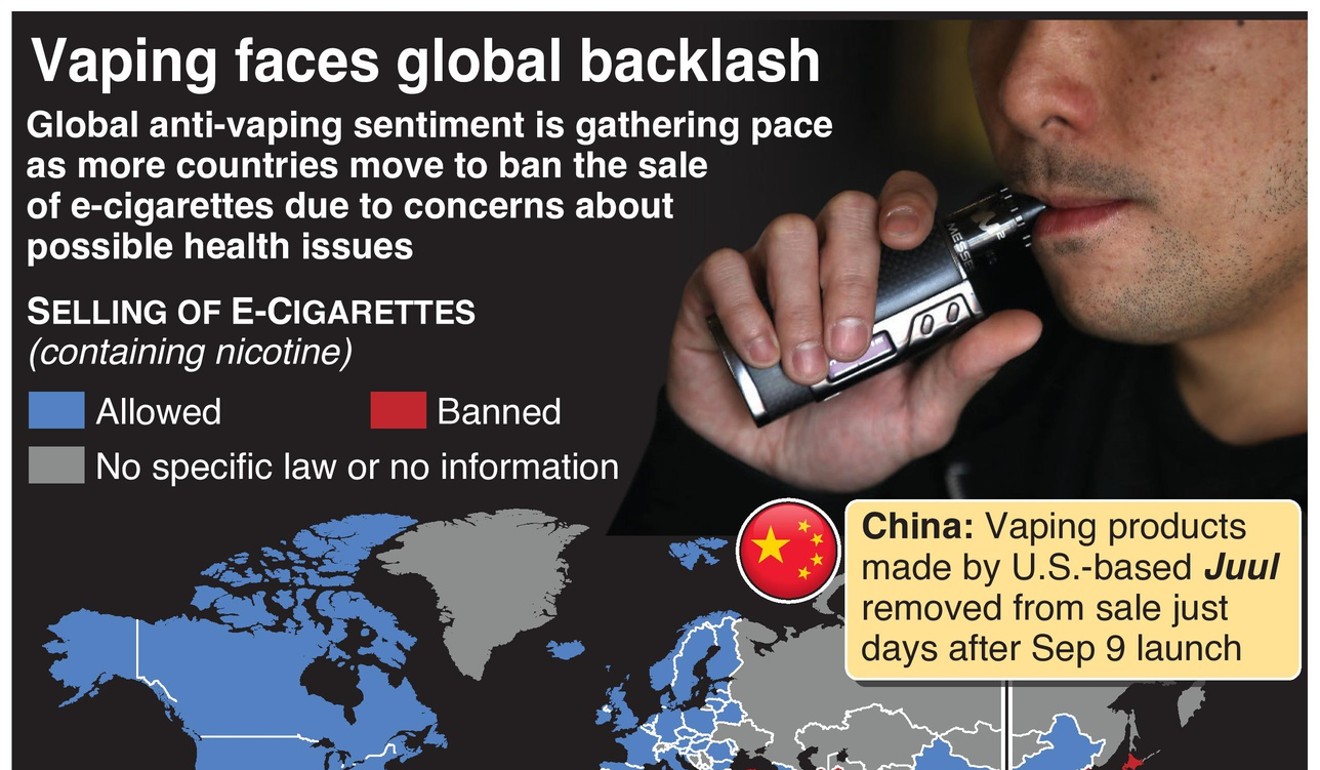
5 things you need to know about e-cigarettes
- Vaping had been seen as a healthier alternative to traditional cigarettes, but a rash of illnesses and deaths suggests that might not be true
E-cigarettes have become hugely popular in the past decade but a rash of vaping-linked deaths and illnesses in the United States is feeding caution about a product, already banned in some places.
Here are five things to know about electronic cigarettes.
Around for two decades
Early designs for an electronic cigarette were drawn up in the United States in the 1960s, but Chinese pharmacist Hon Lik is acknowledged as the inventor of a viable commercial version in the early 2000s.
Hon, who was trying to quit his own pack-a-day habit, took out patents between 2003 and 2005. But his devices would soon be overtaken as the international market exploded.
Don’t let anxiety ruin your life
How do they work?
A battery powers a coil that heats a liquid containing various amounts of nicotine as well as propylene glycol and vegetable glycerin, which mimic tobacco smoke when heated.
This “e-juice” can also contain flavourings and other substances, such as THC, or tetrahydrocannabinol, the psychoactive ingredient in marijuana.
E-cigarettes are mostly draw-activated, with the puffing releasing vapour.
They do not produce tar or carbon monoxide – two of tobacco’s most noxious elements and associated with cancer and cardiovascular disease.
Harmful to health?
E-cigarettes were initially touted as less damaging than tobacco, which causes around 8 million deaths a year.
In 2015, public health authorities in England said best estimates showed they were 95 per cent less harmful than tobacco.
“Even if it is difficult to quantify precisely the long-term toxicity of electronic cigarettes, there is evidence that it is significantly lower than traditional cigarettes,” the French Academy of Medicine said the same year.
How to come with change so it doesn’t overwhelm you
However concern has been growing.
On October 6, US health authorities reported the 19th and 20th vaping-related deaths this year, and more than 1,000 confirmed and probably cases of a mysterious lung illness linked to e-cigarettes.
The US Centres for Disease Control and Prevention said last month that many of the cases involved the use of black market marijuana products.
In July, the World Health Organisation (WHO) warned that electronic smoking devices were “undoubtedly harmful and should therefore be subject to regulation”.

Another worry is that the vaping flavours are particularly attractive to teenagers and an enticement to pick up the habit.
Exponential growth
The number of vapers worldwide has leapt from 7 million in 2011 to 41 million in 2018, according to leading market researcher Euromonitor International.
By comparison, there were 1.1 billion tobacco smokers on the planet in 2016, according to latest WHO figures on its website.
Four steps to building good habits you need in life
The largest markets for e-cigarettes are the United States followed by Britain, France, Germany and China.
The increase in vaping has been particularly dramatic among teenagers.
Moving towards regulation
Last month, India became the latest country to ban the import, sale, production and advertising of e-cigarettes, citing in particular concerns about its youth.

The devices are already banned in several places, such as Brazil, Singapore, Thailand and the US state of Massachusetts, but elsewhere legislation is inconsistent.
In June, San Francisco became the first major US city to effectively ban the sale and manufacture of electronic cigarettes.
In September, New York followed Michigan in banning flavoured e-cigarettes.
This article was curated by Young Post.

.png?itok=arIb17P0)